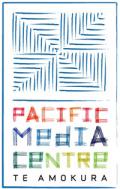
Kim Bowden
An extensive collection of documents, which tell the story of the Ngatihine land dispute in Northland in the 1970s, has been gathered together by leading New Zealand photojournalist John Miller and presented in an interactive audio-visual report.
The project, still a work-in-progress, was on hand at the Media, Investigative Journalism and Technology Conference at AUT University on the weekend.
Miller (Ngapuhi) was a participant and observer during the 1970s dispute, which involved confrontation between Maori landowners and state authorities over a forestry development, working as both photographer and land rights activist.
He recalled “running around with an Olivetti typewriter going bang, bang, bang”, writing press releases to pitch the issue to media who, he believed, found it harder to tell the slow boiling story than other more charged land use conflicts taking place at the time, such as Bastion Point or the Raglan golf course.
He said the media of the time focused narrowly on reports of court proceedings “that didn’t tell you a damn thing about the issue.”
For his latest project, helped along by a four-month fellowship grant from AUT University’s Pacific Media Centre, key events from the dispute have been plotted on a timeline.
Each event has links to either newspaper clippings or other media transcripts; explanatory documents including Maori Land Court documents and minutes of meetings or Miller’s own photographs and press releases.
Digital timeline
Miller said the digital timeline is “a great way of presenting different components” and suggests it would have been “a nightmare trying to put this into a book.”
He said as the project developed, it was “exciting” to see his work from the time “contextualised”.
Miller, who in 2003 received a NZ Media Peace Prize Award, said he is pleased his documentation, that had been gathering dust in folders and boxes at his place, is now more readily accessible to a new generation of landowners, media practitioners and academics.
He sees the report as “a history lesson”.
“Present day people involved in the trust that looks after the forestry block are not aware of this history,” he said.
Miller recalled his previous filing system for documents pertaining to the dispute.
“I collected various newspaper articles, sellotaped them to a piece of A4 and xeroxed them off on a University of Auckland student services machine,” he said.
Part of community
Dr Geraldine Peters, a long-time friend of Miller’s and a collaborator on the project, said Miller was “very much a part of the community he photographed” yet, at the same time, was “able to step back and document”.
The AUT University communications lecturer said Miller’s work during the dispute helped educate journalists of the time.
“This was before the days of Maori TV,” she said.
She said the project, supported by a grant from the Pacific Media Centre, ensured his “historical documentation remains accessible in perpetuity”.
“We hope to get it up online and people will be able to dig into it in their own way.”
Kim Bowden is a graduating Dipoma in Communication Studies journalist at AUT University and was part of the PMC Media team covering the conference.



